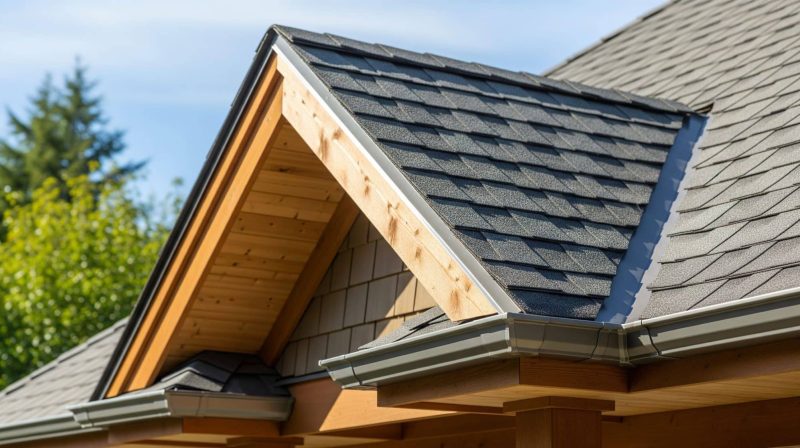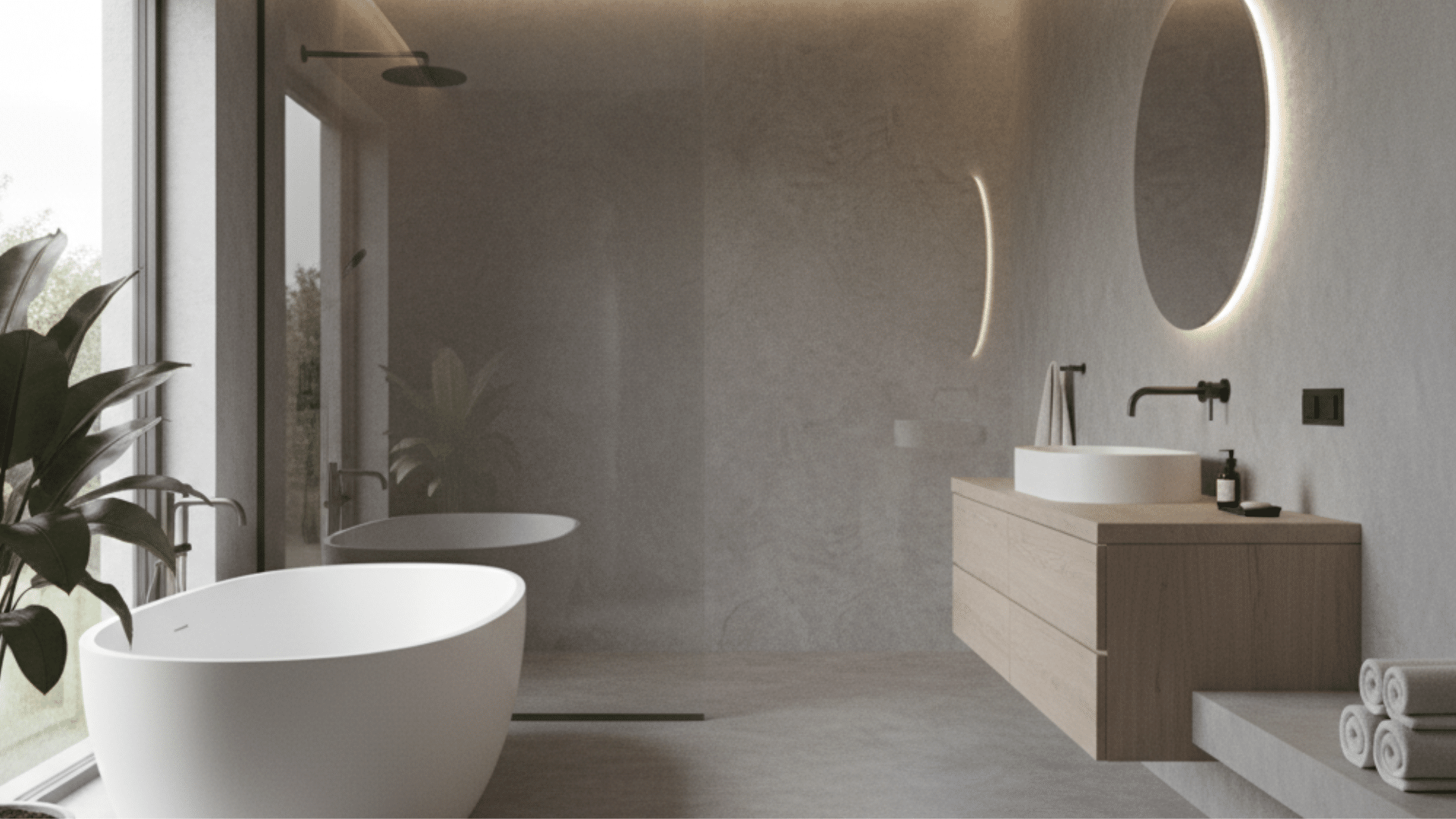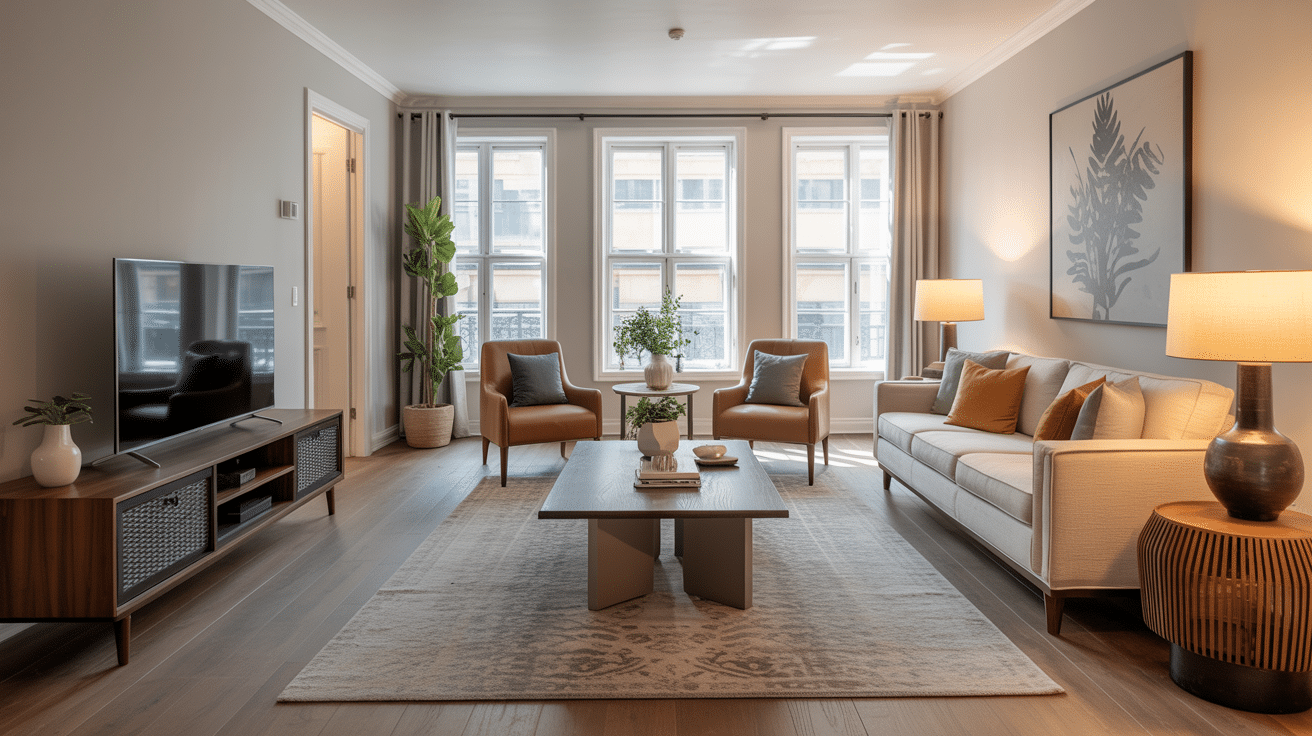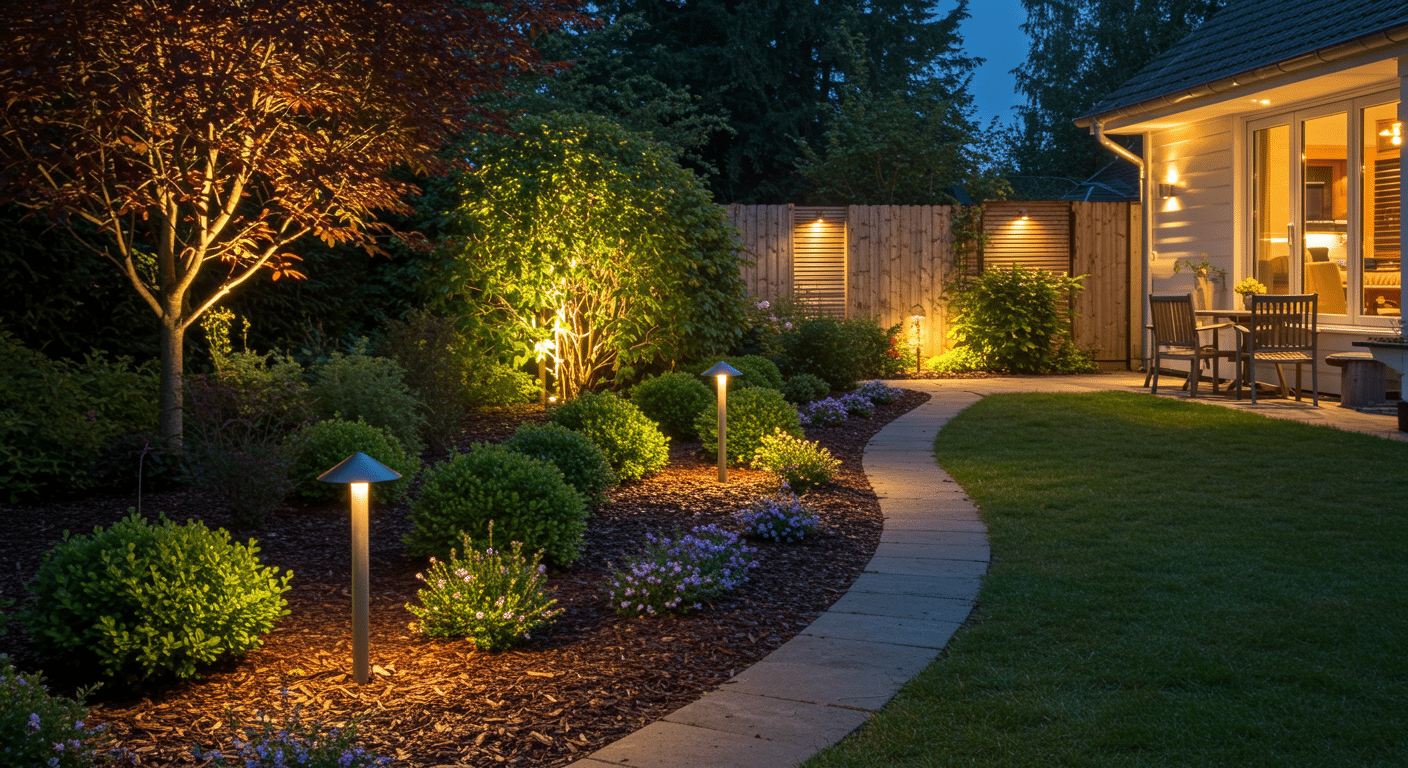Let’s be honest, most homeowners know what a gutter or shingle is, but the term “roof rake”? Not so much. And yet, it plays an important role in both the appearance of your roof and its performance in bad weather.
If you’ve ever wondered what is the rake of a roof? or why does the edge matter?, You’re not alone.
In this guide, we’ll break down the basics of the roof rake edge: what it is, how it compares to eaves, and why it helps keep your home protected, dry, and polished, especially if you have a gable or pitched roof.
What is the Rake of a Roof?
The rake of a roof refers to the angled edge that runs from the ridge down to the eaves along the gable end. It follows the slope or pitch of the roof, creating the triangular outline typically seen in gable-style designs.
Unlike the horizontal eaves at the bottom of the roof, the roof rake edge is diagonal and adds shape and symmetry to the entire roofline.
Functionally, the roof rake plays an important role in protecting the structure. When properly finished with trim or fascia, it helps cover and shield exposed materials such as rafters, decking, and underlayment.
This protection prevents wind-driven rain, snow, and moisture from penetrating the edges, which could lead to rot or damage over time.
A well-constructed rake not only improves durability but also gives the roof a neat, polished appearance.
Understanding the Difference Between a Roof Rake and Eave
When it comes to roof anatomy, the terms “rake” and “eave” are often confused, but they refer to two very different parts of your roof with distinct functions.
| Feature | Roof Rake | Roof Eave |
|---|---|---|
| Location | Sloped edge at gable ends | Horizontal edge at the bottom of the slope |
| Direction | Diagonal | Flat/horizontal |
| Purpose | Protects side edges from wind and rain | Manages water runoff via gutters |
| Design Impact | Defines the roofline and adds symmetry | Often hidden under the soffit |
| Common in | Gable and pitched roofs | All sloped roof types |
Knowing the difference between a roof rake and a roof eave can help you better understand roofing maintenance, spot potential issues, and make informed decisions during repairs or upgrades.
Common Roof Rake Types and How They Differ
Roof rakes come in two main styles, exposed and enclosed, and each offers a different look and level of protection. Understanding the difference can help you choose the best option for your home’s style and climate.
Exposed Rake with Rustic Charm and Visual Detail
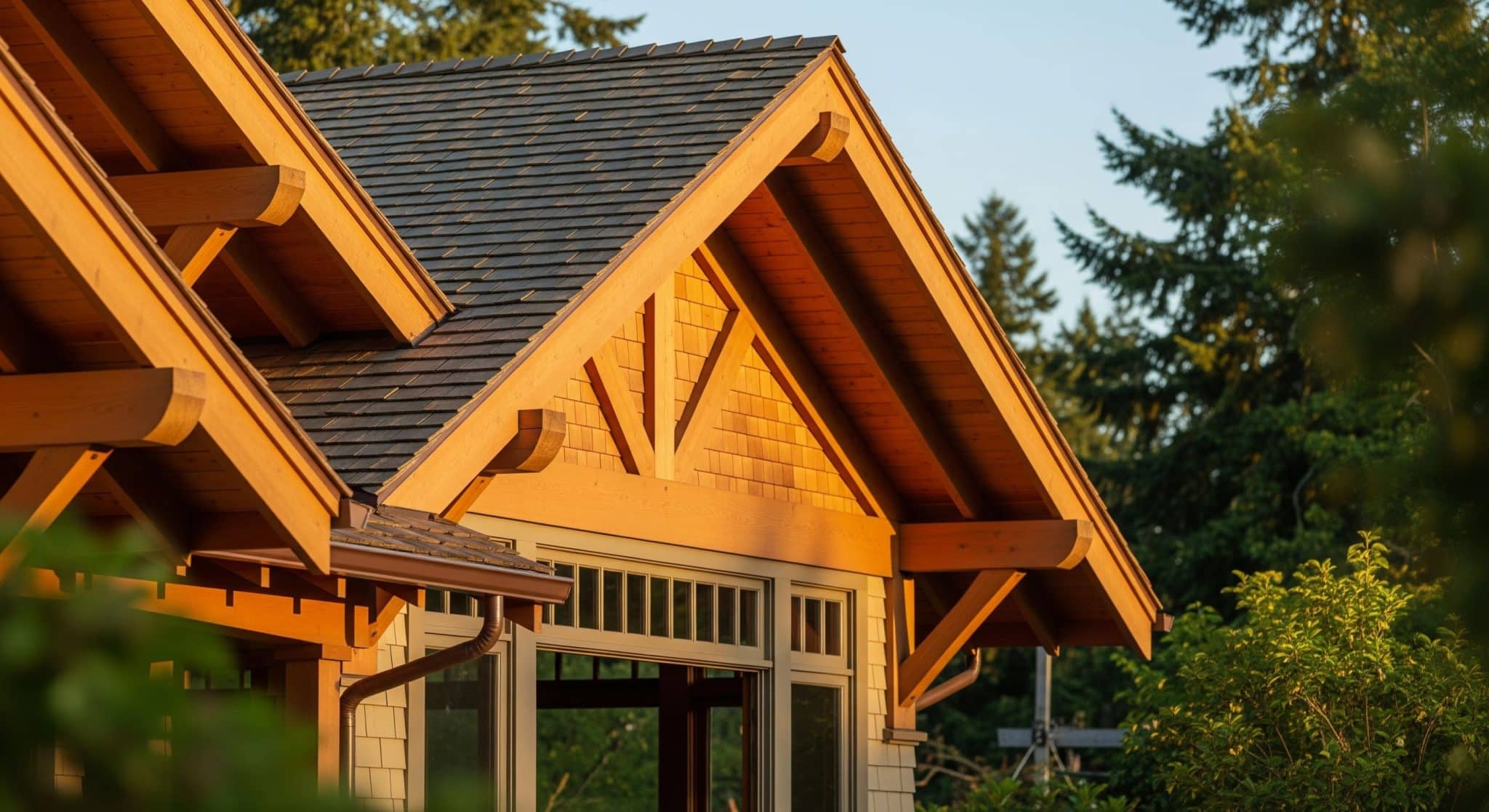
An exposed rake leaves the structural elements, like rafters and roof decking, visible beneath the rake board.
This style is often found in Craftsman, cottage, or rustic-style homes, where architectural detail and charm are emphasized.
While the exposed rake adds depth and visual interest to the roofline, it may require more maintenance over time. Because the materials are uncovered, they’re more vulnerable to moisture, pests, and weather damage if not properly sealed or maintained.
Enclosed Rake with a Smooth Look and Added Protection
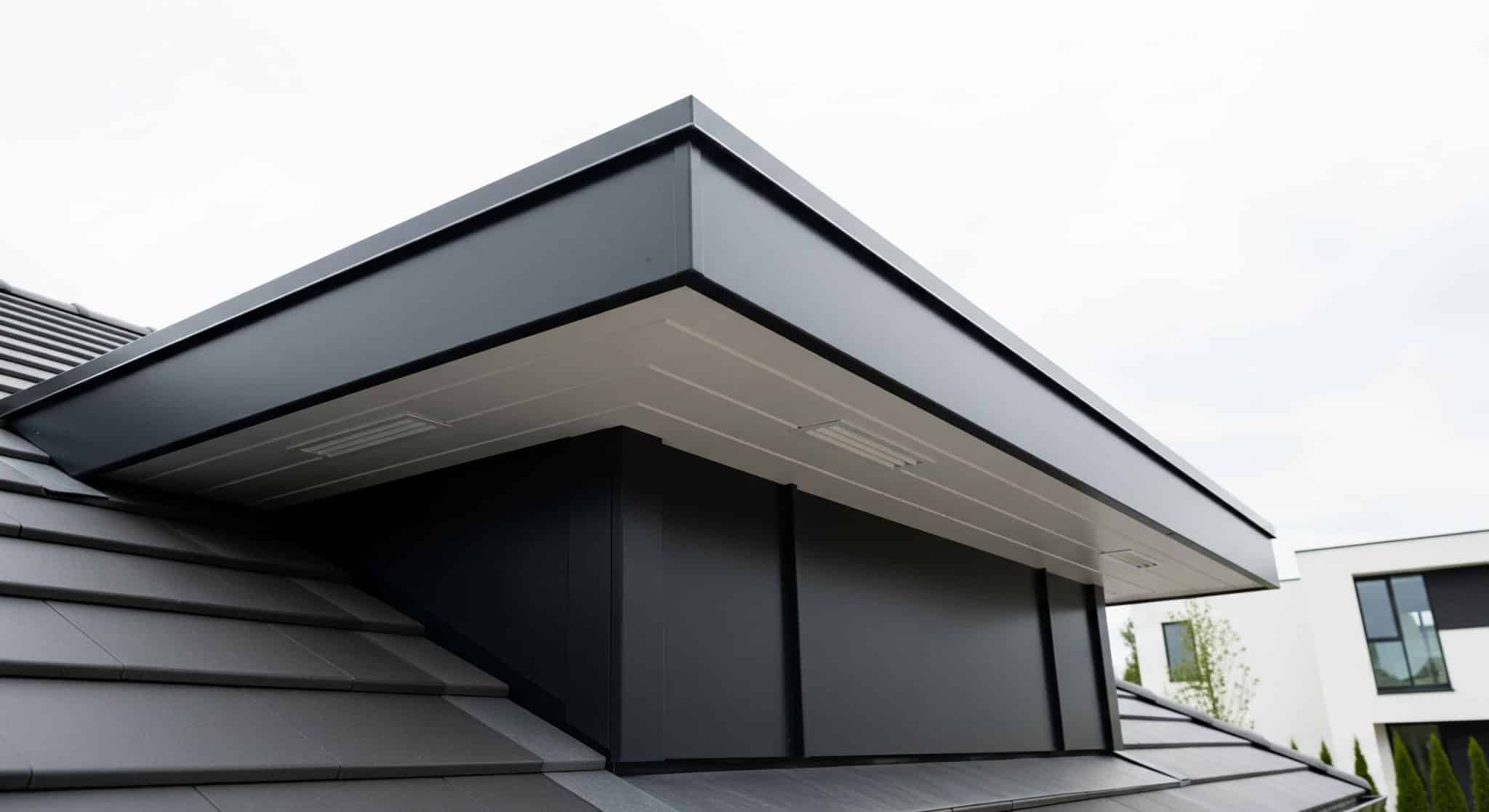
An enclosed rake, also known as a boxed-in rake, features fascia and soffit that cover the underside of the roof’s sloped edge.
This design creates a clean, streamlined appearance, making it a popular choice for modern or contemporary homes. Beyond aesthetics, enclosed rakes offer added protection by shielding the structural elements from rain, snow, and wind.
They are especially practical in harsh climates, helping reduce long-term maintenance and improve the roof’s overall durability.
Purposes and Benefits of a Proper Roof Rake
A well-constructed roof rake edge does more than add visual interest; it plays a key role in protecting your home’s structure. Here are the main benefits of a properly installed rake edge:
- Shields gable ends from wind-driven rain, snow, and debris.
- Reduces the risk of ice dams by improving runoff at the edges.
- Protects exposed roof materials like rafters and decking.
- Enhances curb appeal with a clean, defined roofline.
- Strengthens edge shingles to resist wind uplift and storm damage.
- Supports long-term durability by preventing moisture intrusion at the roof’s edge.
These features make the roof rake a functional and aesthetic asset for any gable-style home.
Main Components That Make Up a Roof Rake Edge
A properly constructed roof rake does more than define the slope; it protects the structure beneath. Here are the main elements that make up a strong and finished rake edge:
Rake Board or Fascia
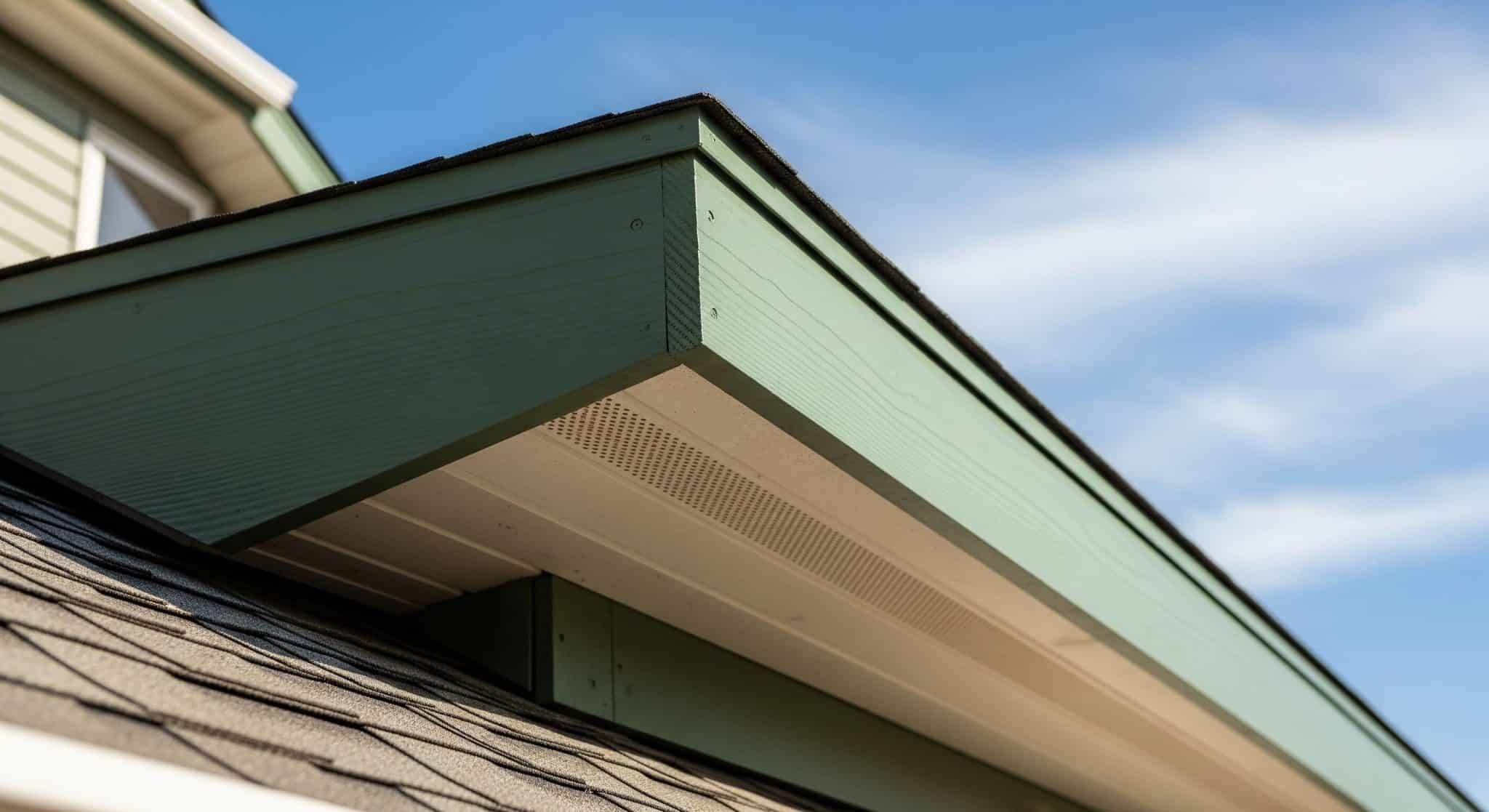
The rake board, also called rake fascia, is the trim that runs along the sloped edge of the roof. It covers the exposed rafter ends, providing a neat, finished look while adding structural support.
This component also helps protect the underlying materials from weather damage, making it both a functional and decorative element of the roof rake.
Drip Edge
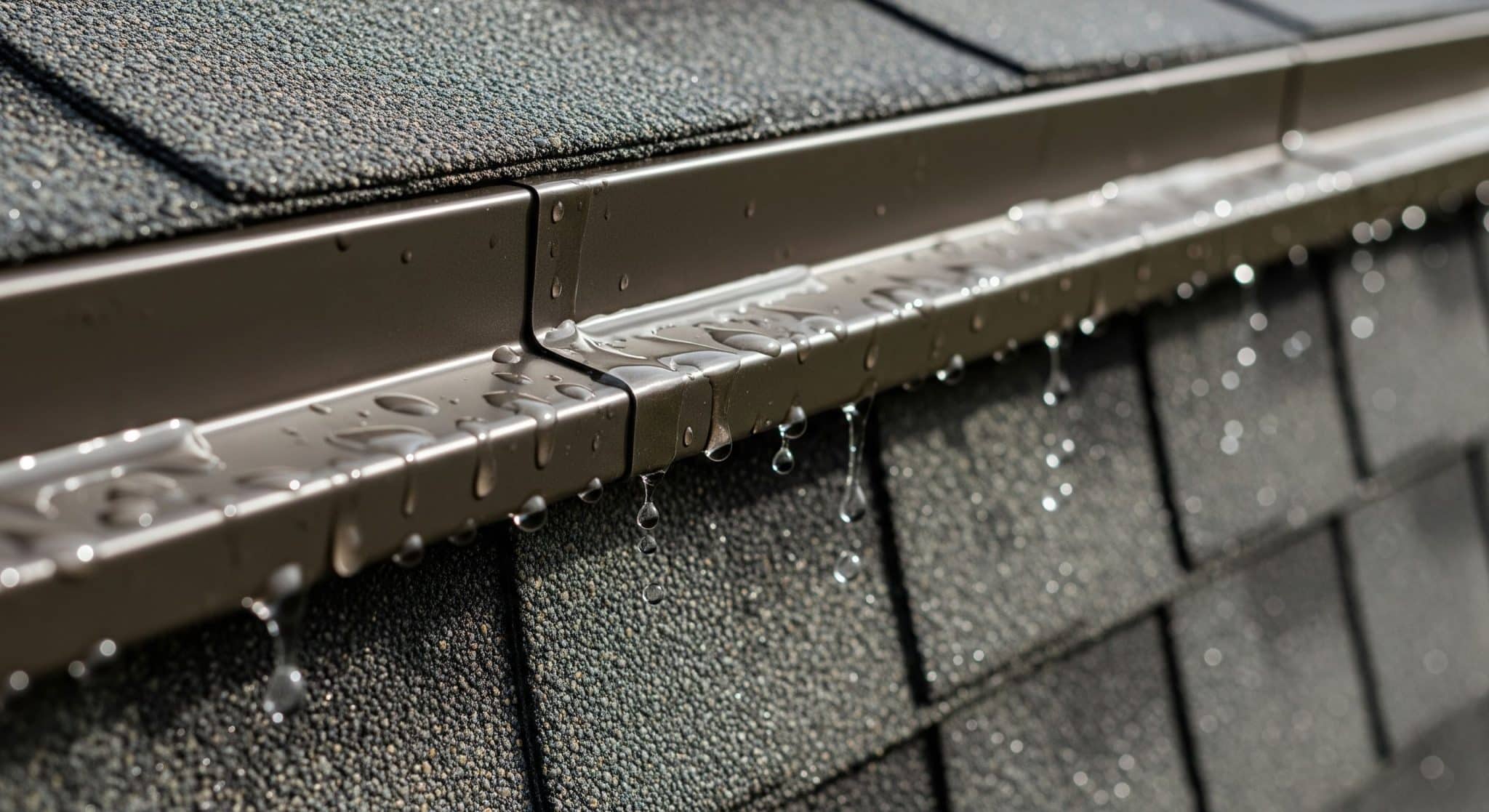
The drip edge is a thin strip of metal flashing installed along the sloped rake edge of the roof. Its main job is to direct rainwater away from the fascia and underlying roof deck, helping to prevent moisture buildup and edge rot.
By guiding water off the roof properly, the drip edge protects against leaks and extends the life of your roofing materials.
Starter Shingles
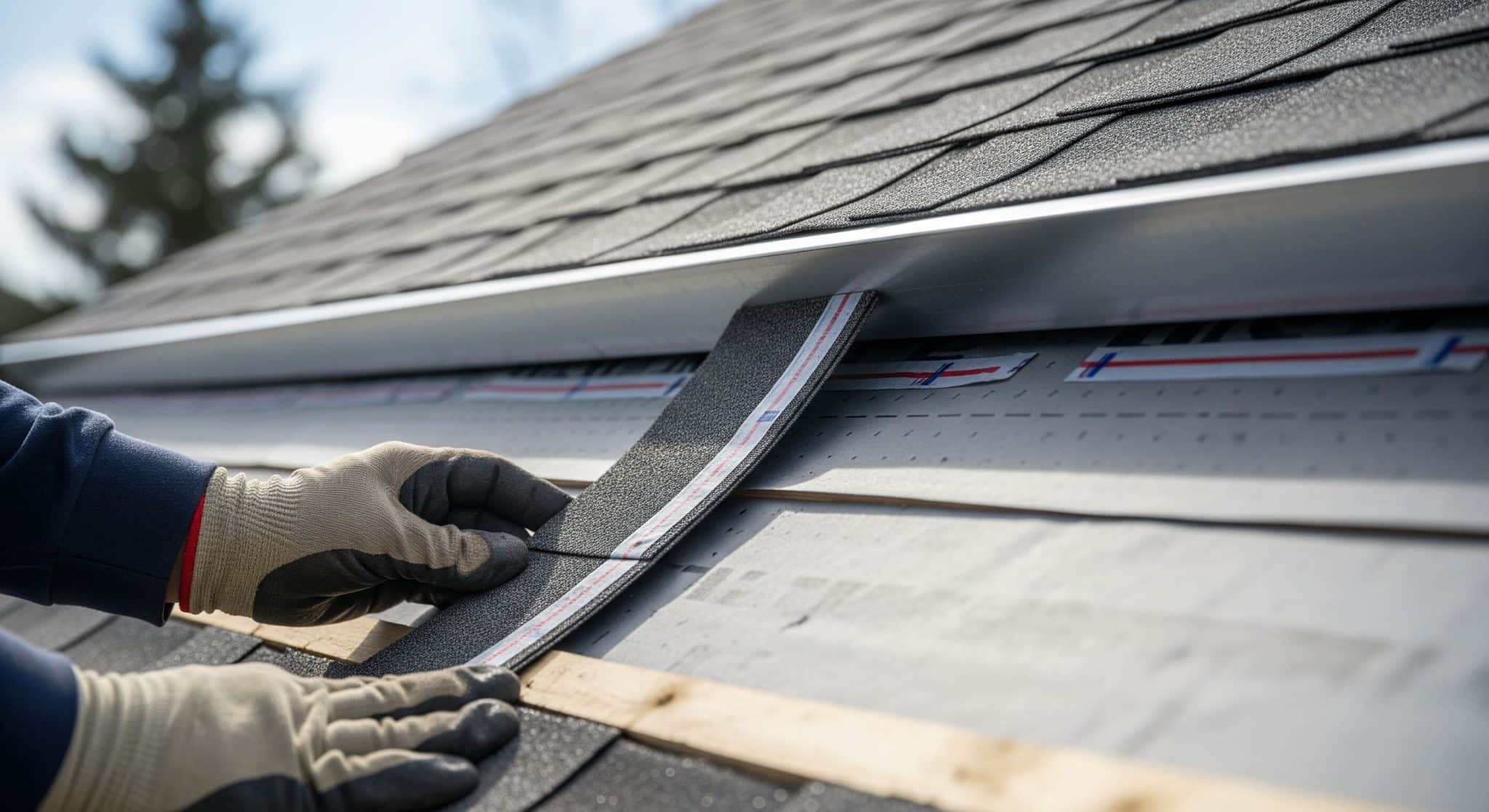
Starter shingles are installed beneath the first row of regular shingles along the rake edge. They act as a secure base layer, reinforcing the edge against wind uplift and helping to seal off potential entry points for water.
By creating a cleaner, more secure starting point, starter shingles play a key role in protecting the roof from moisture and weather-related damage.
When and How to Inspect or Repair Your Roof Rake
Inspect the rake edge during routine roof checks.
Warning signs include:
- Peeling or curling shingles
- Rotted or split rake boards
- Gaps in flashing or missing drip edges
Maintenance Tips:
- Clear debris and leaves
- Reseal caulking or flashing
- Replace damaged fascia or trim
Call a roofing professional if you see sagging, water stains inside the attic, or suspect rot.
Wrapping it Up
So, what is a roof rake, really? It’s more than just a sloped edge; it’s a key part of your roof’s structure that protects your gable ends and helps define the look of your home.
Now that you understand what the rake of a roof is, it’s easier to see why this detail matters.
So if you’re replacing shingles, planning a full roof upgrade, or just doing routine maintenance, don’t ignore the rake edge. It helps guard against weather damage, supports your shingles, and adds a polished finish to your roofline.
It might seem like a small feature, but it plays a big role in keeping your roof strong, secure, and looking great.


